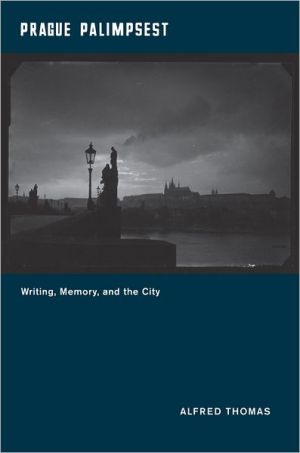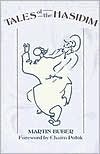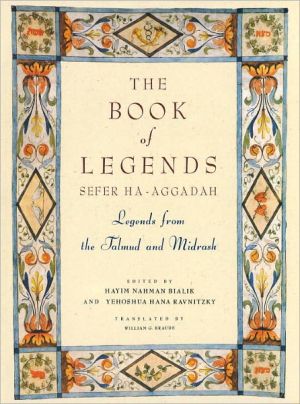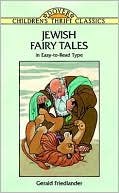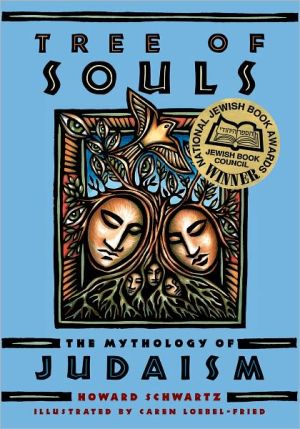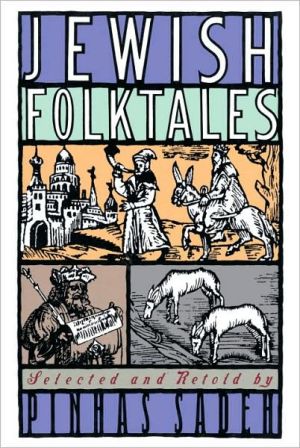Prague Palimpsest: Writing, Memory, and the City
A city of immense literary mystique, Prague has inspired writers across the centuries with its beauty, cosmopolitanism, and tragic history. Envisioning the ancient city in central Europe as a multilayered text, or palimpsest, that has been constantly revised and rewritten—from the medieval and Renaissance chroniclers who legitimized the city’s foundational origins to the modernists of the early twentieth century who established its reputation as the new capital of the avant-garde—Alfred...
Search in google:
A city of immense literary mystique, Prague has inspired writers across the centuries with its beauty, cosmopolitanism, and tragic history. Envisioning the ancient city in central Europe as a multilayered text, or palimpsest, that has been constantly revised and rewritten—from the medieval and Renaissance chroniclers who legitimized the city’s foundational origins to the modernists of the early twentieth century who established its reputation as the new capital of the avant-garde—Alfred Thomas argues that Prague has become a paradoxical site of inscription and effacement, of memory and forgetting, a utopian link to the prewar and pre-Holocaust European past and a dystopia of totalitarian amnesia.Considering a wide range of writers, including the city’s most famous son, Franz Kafka, Prague Palimpsest reassesses the work of poets and novelists such as Bohumil Hrabal, Milan Kundera, Gustav Meyrink, Jan Neruda, Vítĕzslav Nezval, and Rainer Maria Rilke and engages with other famous authors who “wrote” Prague, including Guillaume Apollinaire, Ingeborg Bachmann, Albert Camus, Paul Celan, and W. G. Sebald. The result is a comparative, interdisciplinary study that helps to explain why Prague—more than any other major European city—has haunted the cultural and political imagination of the West.
PRAGUE PALIMPSEST\ Writing, Memory, and the City \ \ By ALFRED THOMAS \ THE UNIVERSITY OF CHICAGO PRESS\ Copyright © 2010 The University of Chicago\ All right reserved.\ ISBN: 978-0-226-79540-9 \ \ \ Chapter One\ Women on the Verge of History: Libue and the Foundational Legend of Prague \ In the earliest known mythic account of the foundation of Prague, in the Latin Legenda Christiani attributed to the monk Kristián and dated by most scholars to the late tenth century, the Bohemian Slavs (Sclavi Boemi) are said to be afflicted by a plague, prompting them to seek the advice and help of a seer or prophetess (phitonissa) before establishing a city named Prague. In later versions of the legend this anonymous prophetess would become known as Libue, and, after her death, her female followers would fight a war against her husband, Premysl the Plowman, and his men before succumbing to ignominious defeat and violent death.\ In his discussion of this foundational myth, Patrick Geary opines that "these legends of women at the beginning form a pentimento, an over-painted but still dimly perceptible recollection of an age of matriarchy." In this chapter I will deploy the textual metaphor of the palimpsest—rather than the painterly image of the pentimento—to explore the constant revision of the foundational legend of Prague from the late tenth to the late nineteenth century. I am concerned less with posing the question whether there really was an age of matriarchy at the threshold of history than exploring how medieval and modern writers reacted to a female myth of origins.\ In most classical and medieval foundational legends, such as Virgil's Aeneid and Geoffrey of Monmouth's Historia Regum Britanniaie (History of the Kings of Britain, 1135), the mythic founder of the city or state is a male hero. The fact that the mythic founder of Prague is a woman complicates the way medieval writers respond to the legend. On the one hand, they must acknowledge Libue's primacy as the matriarch who prophesies the rise of the city; on the other hand, this authority clearly conflicts with the standard medieval misogynistic perception of women as inferior to men. As a consequence, high and late medieval treatments of the legend of Prague's founding are characterized by a profound ambivalence toward Libue and her female followers. At once affirming and denying women's primacy in the establishment of Prague and the origins of the Czech people, the various versions of the legend come to resemble a palimpsest in which the writers struggle to efface the "memory" of matriarchal primacy in the interests of patriarchy while partially preserving that memory in the interests of asserting their own (ethnic) origins.\ The foundational legend of Prague raised crucial questions of primacy and textual authority in an age when written sources were deemed central to the legitimacy and sovereignty of aristocratic families and royal dynasties. The very notion of a woman prophesying the foundation of a city that would later become a center of ducal and royal power posed immense difficulties for male writers concerned to legitimize male sovereignty—the sovereignty of the Czech dukes in the case of the twelfth-century Latin chronicler Cosmas and that of the Czech nobility in the case of the anonymous author of the Dalimilova kronika (The Dalimil chronicle, ca. 1314), the earliest Czech-language account of Bohemian history.\ From Kristián to Cosmas\ In his brief account of the foundation of Prague the monk Kristián states that the Bohemian Slavs lived in the forest as free as a horses without reins and without a prince to rule over them before a catastrophic plague forced them to found a city. This transition from the forest to the town culminated in the elevation of a plowman named Premysl as prince:\ But the Slavs of Bohemia, who settled under Arcturus and venerated idols, lived like horses unrestrained by a bridle, without law, without a prince or ruler, and without a city. Roaming about sporadically like reckless animals, they inhabited only the open country. Finally, after being overtaken by a disastrous plague, they, as the story goes, turned to a prophetess to request good advice and prophetic pronouncement. And having received it, they founded a city and named it Prague. Afterward, they found a very discerning and prudent man named Premysl, who merely spent his time ploughing, and in keeping with the pronouncement of the prophetess, they appointed him prince or ruler, giving him the abovementioned prophetess for a wife.\ There are several details in Kristián's laconic account of the founding of Prague which differ from subsequent versions. First, the seer is nameless; second, the welfare of the tribe is linked in some mysterious fashion to her prophetic powers; and third, her involvement in the establishment of the city is independent of male power, since the reference to Premysl the Plowman comes later. Within this highly telescoped account of the prehistory of the Czechs one finds less a seamless narrative than strange omissions and unexplained lacunae. What were the circumstances of the plague that threatened the tribal collective, and what did this have to do with their lack of feudal leadership? Who was the seer they turned to for help, and why did they immediately thereafter decide to found a city?\ Of course, these are questions to which we can never provide satisfactory answers. More significant is the fact that later writers felt the need to do so by filling in the perceived gaps in the inherited narrative and lending it the aspect of a complete and coherent account. However, this urge to fill in the gaps required a narrative strategy more complex than just joining the elliptical dots; in some cases it necessitated changing or even reversing the sequence of events altogether. For example, in Cosmas of Prague's highly influential Chronica Boemorum (The Chronicle of the Czechs, 1125) the appointment of a male ruler is said to precede the establishment of Prague, whereas in Kristián's earlier account Prague is founded before Premysl's ascendancy: "One day, at the beginning of the new reign of laws, the aforesaid Libue, excited by prophecy, with her husband Premysl present and other elders of the people standing nearby, foretold thus: 'I see a burg, whose fame touches the stars, situated in a forest, thirty stades distant from the village where the Vltava ends in streams.... When you come to that place, you will find a man putting up the doorway of a house in the middle of the forest. From that event—and since even a great lord must duck under a humble threshold—the burg you will build, you shall call "Prague"' [Praha, from práh, threshold]."\ Writing more than a century later than Kristián, by which time Prague had become the power base of the Premyslid family, Cosmas, dean of the Prague chapter and spokesman of the ruling dynasty, was concerned above all to emphasize the primacy of the princes over the city they ruled. At stake in his account was the necessity not only of legitimizing Premyslid sovereignty by tracing its origins back to the dynasty's mythic founder but also of asserting the primacy of patriarchal power over matriarchal authority.\ Cosmas was the first writer to invest Libue with a name, biography, and patrilineal ancestry, elements all lacking in Kristián's spare account, where, before the founding of Prague, men and women enjoy equal social status in the forest. Libue's patrilineal ancestry begins with Cech, the eponymous founder of the Czechs, a figure analogous to the Trojan Brutus, the great-grandson of Aeneas, in Geoffrey of Monmouth's history of the foundation of Britain. Cech's successor was Krok, the father of three women, Kazi, Tetka, and Libue. This paternal ancestry may even have been invented by Cosmas, just as Geoffrey of Monmouth furnished Britain with a mythic founder in the otherwise unattested figure of Brutus.\ Important in both foundational legends is the need to establish a male founder for a nation and its people. In the case of Bohemia the figures of Cech and Krok were intended not just to fill in a perceived gap in the prehistory of the Czechs but to consolidate Libue's status by supplying her with her own patrilineal ancestry. The likelihood that this ancestry was supplemented by Cosmas is reinforced by the absence of any such lineage in Kristián's chronicle. Cosmas goes on to relate how the female followers of Libue rise up against the men and wage a war between the sexes. This female rebellion ends with the defeat of the women and the destruction of their castle. The women are raped by the men and married to them, an act of violence which marks the transition from matriarchal myth to patriarchal history: "Since that time, after the death of Prince Libue, the women of our people are under the power of men" (The Chronicle of the Czechs, 52). In the words of Patrick Geary, "Libue and the Amazons belong not to the history of the Bohemian lands but to their prehistory. Her death and their defeat are preconditions for the start of history" (Women at the Beginning, 40).\ And yet, as Geary himself states, Cosmas's mythic treatment of Libue is contingent upon the historical role played by certain influential women in the high Middle Ages. In this sense, the apparently smooth and sequential transition from matriarchal myth to patriarchal history is complicated by the tension between historical and mythic elements in the actual treatment of the legend. In contrast to the later Middle Ages, high medieval women were able to exercise power and occasionally ruled states, as exemplified by Countess Matilda of Tuscany (ca. 1046–1115). As Geary points out, Matilda's reputation for prudence and conciliation as witnessed by her role in the Investiture Contest provided Cosmas with a real-life analogue for Libue's role as a wise counselor. As a devoted supporter of Pope Gregory VII throughout the contest, Matilda would have served as an exemplary figure to the Bohemian cleric. On the other hand, Cosmas's clerical training predisposed him to view all women—regardless of rank and status—in a negative, disapproving light. Although he extols Libue's wisdom as a counselor, he also denigrates her indolence, softness, and weakness as a woman. This standard misogynistic view of medieval women was complicated by the historical and political circumstances in which Cosmas found himself as the advocate of the ruling Premyslid dynasty of dukes. In this capacity he was obliged to acknowledge Libue's central importance as the ancestor of the dynasty on whose behalf he was writing his chronicle. The only way that Cosmas could resolve this tension was by bringing the entire story to a violent close. As we shall now see, an analogous set of contradictions informs the treatment of Libue and the Bohemian Amazons in the Dalimil Chronicle.\ The Dalimil Chronicle\ If Cosmas was the spokesman of the reigning dynasty of dukes, the anonymous author of the Dalimil Chronicle was the unapologetic champion of the Czech lower nobility and a fierce opponent of the Czech kings' traditional favoritism toward Germans and foreigners. He deviates from Cosmas in making Libue the mouthpiece of his own pro-Czech and antiforeign sentiments. In fact, the author of the Dalimil Chronicle subordinates the treatment of the legend—and indeed his entire work—to the central ideological tenet that Bohemia belongs to the Czechs alone. Underscoring the threat posed by foreigners, the chronicle ends with the election of one such foreigner, Count John of Luxembourg, the fourteen-year-old son of Emperor Henry VII, as king of Bohemia in 1311. As a parting shot, the author warns the new king to keep his nobles in his counsel or leave the realm with dignity while admonishing his audience to heed Libue's teaching that the Czech state and its language ( jazyk) must take precedence over that of foreigners.\ In the legend itself this message is accorded more importance than the prophecy concerning the foundation of Prague. Libue's male vassals have begun to clamor for the appointment of a male ruler, prompting the prophetess to convene a council in which she warns that a foreign prince would mean the end of Czech independence and the ruin of the state. In identifying the appointment of a male prince with the elevation of a foreign ruler, she implicitly equates her gynocracy with native Czech rule: "The community is the bastion of all. Those who neglect it have lost their senses. When you destroy your community, do not put your trust in your castle [i.e., defense]. Without the community conflict will ensue.... You should rather endure my judgment than desire to have a strong man as your prince. A woman's hand will strike you less harshly than the pain inflicted by a man's wound. You will believe me when you behold your prince behind his plow. If a foreigner rules over you, your state/language [jazyk] will not last long" (chapter 4, lines 7–20 [23–24]).\ Whereas for Cosmas, Premysl the Plowman is the legitimate ancestor of the Czech dukes, here he is equated with a foreigner or outsider (cizozemec) who will deprive the nobility of its sovereign rights and privileges. The target audience may have seen in the description of Premysl as a foreigner an allusion to the new incumbent of the Czech throne, John of Luxembourg (r. 1310–46). If so, it may also have detected a historical prototype for Libue in John's bride, Elizabeth Premyslovna, the last surviving representative of the native Premyslid dynasty. In 1306 Elizabeth's brother, Wenceslas III, was assassinated in mysterious circumstances, a crisis which plunged the entire kingdom into chaos. The ensuing interregnum witnessed a struggle in and beyond the kingdom, as foreign rulers staked their claim to the Czech crown. In Bohemia itself the question of the succession centered on the king's youngest sister, the fourteen-year-old Elizabeth, who became the focus of the Czech nobility's attempts to control events. Unlike Libue and her real-life prototype, Matilda of Tuscany, both of whom ruled in their own right, Elizabeth was merely a pawn in a power game fought between men, but her status as the last representative of an extinguished dynasty invited an inverted comparison with Libue at the matriarchal threshold of history.\ Following Wenceslas III's murder, the Czech nobility had chosen Henry of Carinthia as their king; but when it became apparent that he was incompetent, a majority of the leading nobility and clergy resolved to depose him in favor of John of Luxembourg. After some initial resistance to this choice, the emperor, who was reluctant to sacrifice his fourteen-year-old son John to the capricious Czech magnates, gave way to their demands and agreed to his son's marriage to the Princess Elizabeth. As part of the agreement, Elizabeth, by now eighteen years of age, was smuggled out of Prague (still under the control of Henry of Carinthia) and married to John of Luxembourg in a ceremony in Speyer Cathedral on August 31, 1310.\ Libue's function as the mouthpiece of the author's pro-Czech sentiments in the Dalimil Chronicle provides an intriguing parallel with Princess Elizabeth's role as the symbolic figurehead of the Czech nobility in its struggle for power during the years 1306–10. Moreover, Libue's reluctant marriage to Premysl the Plowman recalls Elizabeth's marriage of expediency to John of Luxembourg. Here, as elsewhere in the chronicle, the author uses Libue as a vehicle for his own fears of foreign domination in the state. It is even tempting to read Libue's reluctance to marry an outsider as an expression of the author's opposition to the candidacy of John of Luxembourg for the throne of Bohemia. Thus, the author faces a conflict of interests between his vision of Libue's gynocracy as the symbol of Czech independence and the patriarchal expectation that men—not women—should rule.\ (Continues...)\ \ \ \ \ Excerpted from PRAGUE PALIMPSEST by ALFRED THOMAS Copyright © 2010 by The University of Chicago. Excerpted by permission of THE UNIVERSITY OF CHICAGO PRESS. All rights reserved. No part of this excerpt may be reproduced or reprinted without permission in writing from the publisher.\ Excerpts are provided by Dial-A-Book Inc. solely for the personal use of visitors to this web site. \ \
Preface A Note on Translations, Quotations, and Names Introduction 1. Women on the Verge of History: Libuše and the Foundational Legend of Prague 2. Deviant Monsters and Wayward Women: The Prague Ghetto and the Legend of the Golem 3. The Castle Hill was Hidden: Franz Kafka and Czech Literature 4. A Stranger in Prague: Writing and the Politics of Identity in Apollinaire, Nezval, and Camus 5. Sailing to Bohemia: Utopia, Memory, and the Holocaust in Postwar Austrian and German Literature Epilogue: Postmodern Prague? Appendix: Translations of Poems about Prague Bibliography Index
\ TLS“Prague Palimpsest explores the complex interplay between history and imagination in representations of what the poet Vitĕzslav Nezval called the ‘city-book.’ . . . The five main chapters supply fresh discussion of particular traditions: myths of the city’s origin; the Golem and Prague’s Jewish heritage; Kafka and his legacy; the relationship between Prague and Paris in the interwar avant-garde; and the writings of Paul Celan, Ingeborg Bachmann, and W. G. Sebald. Each supplies a rich store of examples, and shows a different Prague: nationalist capital, Gothic Praga magica, or city of surrealist flânerie.”—Times Literary Supplement\ \ \ \ \ \ Slavic Review“Prague Palimpest should find an eager audience among scholars curious as to how writers have written in or around the city. Brief but elegant summaries of the works under discussion are followed by inspired interpretations.”—Slavic Review\ \ \
